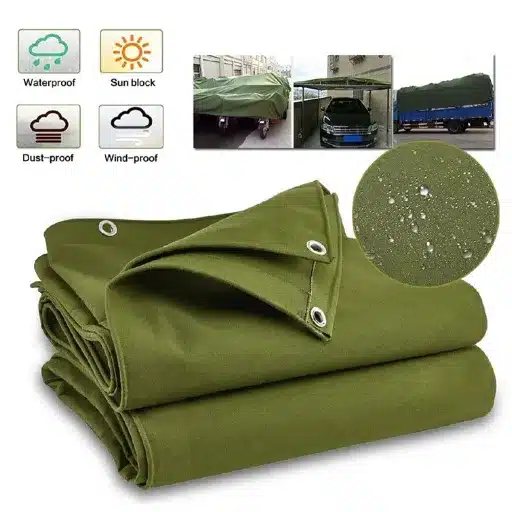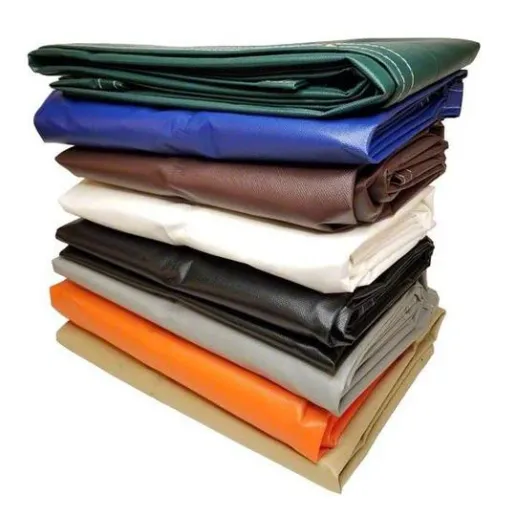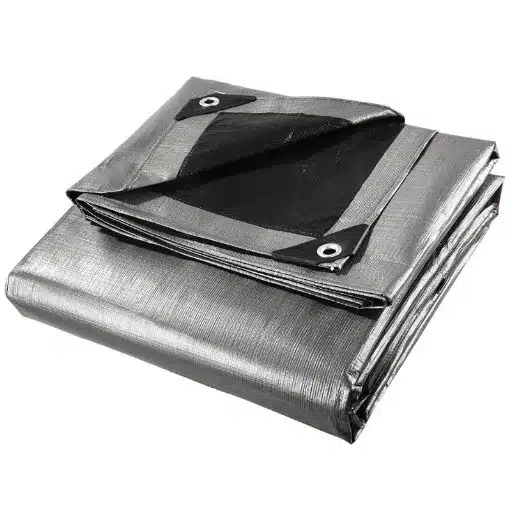Canvas tarp covers, also known as tarps, are tools that are multifunctional, which means they are extremely useful tools. They are indispensable in several industries and households, thanks to their ability to act as machine covers, outdoor material protection, and shelter during bad weather. So why is it that canvas tarps are more effective and preferred? This article will address these questions and delve into the world of canvas tarps to explain their advantages, unique characteristics, and the uses to which they can be practically applicable.
Definition and Overview of Canvas Tarpaulins
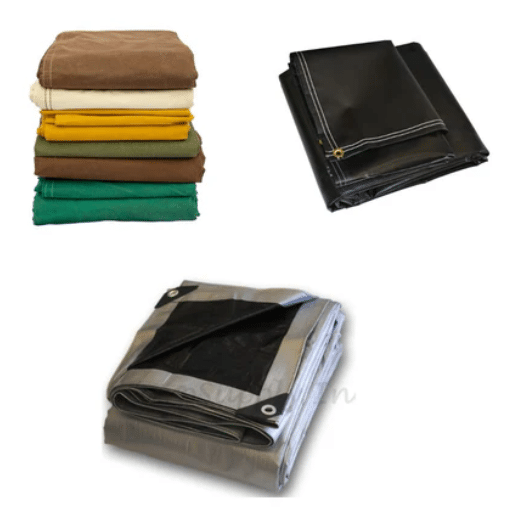
What is a Canvas Tarpaulin?
Canvas tarpaulins, often just called canvas tarps, are strong and adaptable protective covers typically made from woven cotton, and sometimes a mix of cotton and polyester. Designed to be tough and porous, the canvas tarps are coated with a special treatment that makes them resistant to moisture, as well as UV rays, and even mold, which makes them perfect for extended outdoor use. Unlike tarpaulins crafted of polymers like vinyl or polyethylene, canvas tarps are a great option due to their eco-friendliness and their biodegradability. Their strength is what makes them a go-to option in agriculture, equipment covering, and surface protection in rural/industrial/residential settings.
Primary Functions of a Tarp
Tarps have a myriad of functions, making them essential in many scenarios. Their major function is being able to provide cover from the elements, including the rain, and the wind, and also harmful rays of the sun. This is crucial in many situations, like for constructions where materials have to be protected, or for outdoor storage. In larger quantities, tarps are also a necessity in farming, where they have to be used to handle the covering of crops, machines, hay bales, and generally anything that needs covering to stay dry.
Another use of tarps is in the putting together of makeshift shelters and tents, which are used in events and also in camping or emergencies. Their use in covering works particularly well due to their shape and ability to be used in a space where they can be held up, they also provide protection from the entry of dust and debris, as well as the ability to handle and provide protection in various environments.
Canvas Tarpaulins: A Brief History
Canvas tarpaulins have been an integral part of human invention and innovation for as long as we can remember. The term “tarpaulin” comes from the word “tar” and “pall,” as in coat, and refers to the earliest methods of waterproofing, where the canvas was smeared with tar so that water could bead off. Ships have always had the need to transport goods across long stretches of water, and the same is true of cargo. Sailors from the 17th and 18th centuries had the same need and began using canvas tarpaulins for their goods as well as to create makeshift tents, called tarpaulins, when they were at sea. With time, they expanded beyond the sea and took place in the development of the agriculture, civil construction, and even military industries.
Today, canvas tarpaulins are made from a heavy-duty polyester and cotton blend, and they are coated with strong weatherproofing to enhance their strength. They are a development of their earlier brethren and now can be used to protect machinery, loaded ships, truck covers, and machinery to shield from the effects of bad weather. With time, the need for tarpaulins has evolved from tradition to modern disaster relief efforts, eco-friendly construction building, and manufacturing that is geared toward environmentally friendly technologies as an alternative to plastic tarp. This further shows the timeless value of canvas tarpaulins over the centuries.
Types of Canvas Tarps
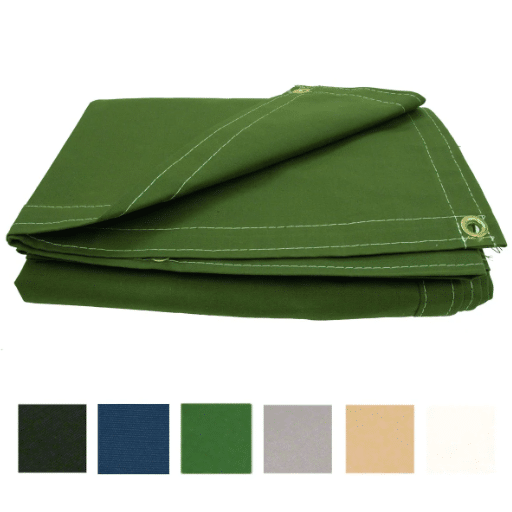
Waterproof Canvas Tarps
Waterproof canvas tarps are made to provide you with the most durable and reliable way to protect your items or surfaces from water exposure. This is possible since the tightly-woven fabric is waterproofed with substances like wax or even oil which helps in preventing rippling while the fabric is still able to breathe. Items that are kept in outdoor construction, agriculture, personal items like cars, and equipment or outdoor furniture are some of the things that provide protection as well as they are built to resist different weather conditions. The efficiency is uncomparable to their plastic rivals, is eco-friendly and to some extent, canvas will give less problems of harsh weather conditions.
Fire-Resistant Canvas Tarps
Fire-resistant canvas tarps are present just like waterproof canvas tarps are in many options so as to have all ends covered. Safety from fire hazards is something that many people recommend too. The fire-resistant canvas tarps are especially treated and are very slow to burn as a result so they are a very viable option. One being slow to ‘burn’ means failure to ignite quickly, from which the various applications are small enough to be controlled and doesn’t let the fire cost peoples life and property any more, which is why it is slow enough to take specified measures. They are very useful in curbing fire risks, like camp sites or industrial work where metals are used, hence, welding areas.
Heavy Duty vs. Standard Canvas Tarps
Benefits of Using Canvas Tarpaulins
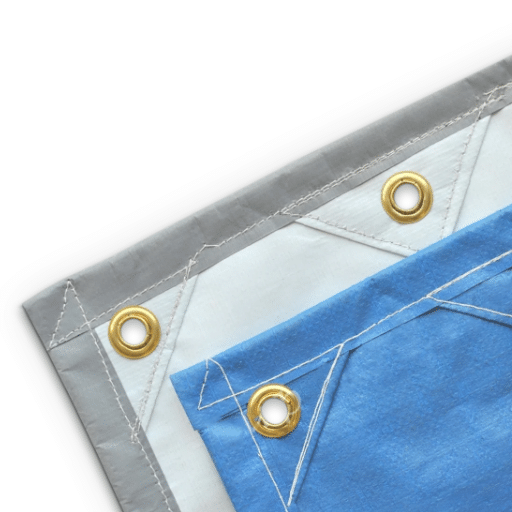
Durability and Longevity
Both domestic and commercial users choose canvas tarpaulins because of their incredible durability. When you consider the life expectancy of canvas tarps compared to plastic or polyethylene, the answer is a simple matter of makeup. Polyester or cotton fabric water-resistant tarpaulins do not trap water, which is the leading cause of degradation. They are blast-proof, withstand UV light degradation, and stand well under any weather. Canvas tarpaulins have extra protection against sunlight. They are immune to the degradation to other kinds of tarpaulins that results from the sun. This makes canvas tarps the most reliable option in case you have a heavy-duty project or a project that will require a lot of time.
Eco-Friendliness of Canvas Tarps
Many users today are turning towards sustainable products in their search for goods available in the world. As customers are becoming more and more environmentally conscious, they are researching sustainable products. These days, customers are looking to minimize their negative impact on the environment as much as they can. The environmental impact of these tarpaulins becomes significantly reduced with a complete life cycle. The tarpaulins after use, they are made with coatings that are biodegradable and made of non-toxic materials. For people searching to lessen their negative impact on the environment, canvas offers a reliable solution, as the tarpaulins offer a minimalistic impact on the environment.
Breathability and Comfort
One of the great advantages of using canvas tarpaulin is its extra breathability in comparison to other options made of plastic. When it comes to canvas, regardless of the use of special treatments, the tarp is naturally very breathable. This is great because it significantly reduces moisture and condensation buildup especially for any item that is covered by the tarp. Canvas is especially suitable and in fact the best material for covering items because it effectively eliminates the risk of mould growth while also protecting the items and providing a comfortable and cool outdoor relaxation area. Both their durability and the hygiene and health of the areas they are used to protect make such tarpaulins especially good for home and factory use.
Applications Across Various Industries
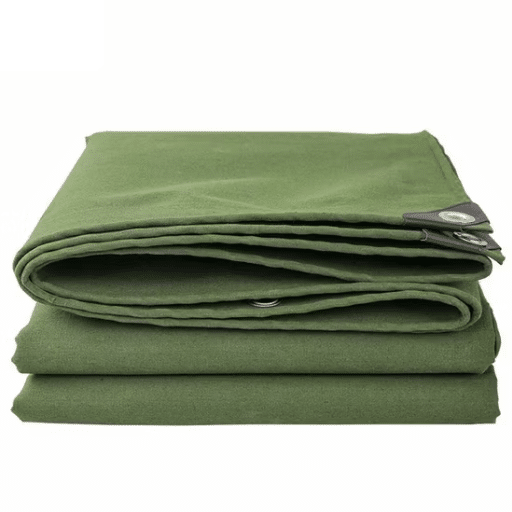
Using Canvas Tarps in Construction Projects
The use of canvas tarps in the construction industry cannot be overstated. They are used to protect valuable materials and sensitive construction equipment on construction sites. Canvas tarps are used in construction sites and they have to shield the site from rain, and debris protection is of utmost importance. Canvas tarps are of great strength and by utilizing their strength, they are able to safeguard lumber, tools, and equipment as well as withstanding adverse weather conditions and maintaining protection. Canvas tarps are considered the best ‘breathers’, preventing moisture and other elements from accumulating. Canvas tarps are considered a must have since they can be used for temporary rooves, scaffold covers and much more.
Agricultural Uses
- ✓
Protection of farming produce in storing and covering bales and other baled products like hay and silage - ✓
Preservation of stored moisture in farming produce at levels that do not support mould growth - ✓
Protection of farming equipment like trucks, stackers and silage loaders from rust and corrosion - ✓
Eco-friendly and long-lasting solution that is compostable and versatile for various farming needs
Camping and Recreational Usage
There is a rise in popularity among camping enthusiasts for canvas tarps due to their practicality, versatility and durability. Canvas tarps are becoming one of the most sought-after multipurpose camping gear items. They can be used for creating shelters, ground covers, and protective barriers against outdoor temperatures and weather conditions. Their breathable nature and natural materials make them ideal for extended outdoor adventures and recreational activities.
Care and Maintenance of Canvas Tarpaulins
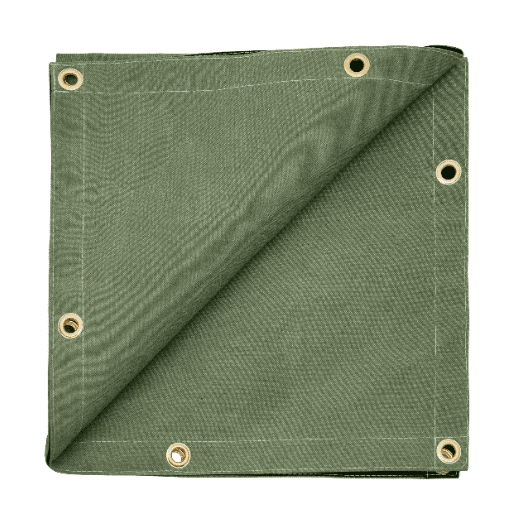
Cleaning Methods of Canvas Tarps
- Initial Preparation: First shake off the tarp after it has been dried to prevent the formation of surface abrasions
- Deep Cleaning: Use warm water mixed with mild soap along with a soft sponge, stiff brush or cloth to clean the tarp gently
- Rinsing: Use water to gently clean off any mild soap residue to prevent mildew formation
- Drying: The tarp should be air-dried completely before storage
- Maintenance: Yearly washing and common care measures significantly decrease the rate of degradation
Proper Storage Techniques
To ensure the canvas tarp remains highly functional, mold- and mildew-free, it must need to be properly stored. It is essential that the tarp is completely dry before being stored, as any amount of moisture remaining helps mold and mildew. Using a breathable bag to store the tarp is highly recommended, as it prevents moisture and provides UV protection. The canvas tarp should be stored in a cool, dark area due to the fact that the sun may cause the tarp to lose its strength. Checking once every month and ensuring it is stored in the proper manner allows it to remain ready to be used at any time.
Repairing Damage to Tarpaulins
Whenever a tarpaulin suffers damage, it is best to repair it quickly, as it prolongs its usefulness and effectiveness. Specialized, high-quality tarp repair patches are uniquely designed and tested by manufacturers, and they are the best solution for repairing small holes, tears, and damaged areas. The first step to repairing the hole or tear is thoroughly cleaning the area. For a larger tear, the recommendation is to sew the edges or use an adhesive fortified with patches as suggested by most manufacturers. For on-the-go repairs, specialists suggest using a repair kit specifically for tarpaulins that consist of adhesive tape patches and a utilitarian knife for best field repairs.
Frequently Asked Questions
Reference Sources
- MIT CSAIL (Computer Science and Artificial Intelligence Laboratory): Discusses the durability and affordability of canvas tarps, highlighting their use for outdoor projects and protection needs.
- Iowa State University Extension and Outreach: Explores the use of canvas tarps for hay storage, emphasizing their durability and multi-year usability when properly positioned and fastened.
- Zero Waste Sonoma: Provides a definition of tarps, including waterproofed canvas, and their applications for protecting exposed objects or areas.

